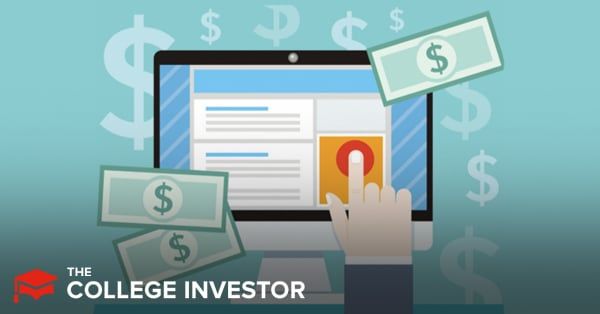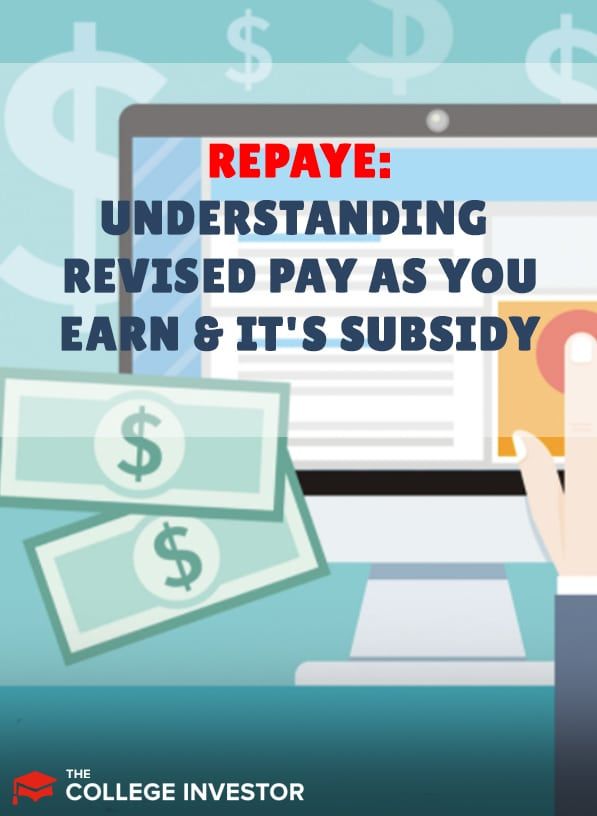
Editor's Note: In 2023, President Biden announced that he was updating and rebranding the REPAYE student loan repayment plan. This new plan is going to be called SAVE, and has features being phased in throughout 2023 and 2024. Learn about the new SAVE repayment plan here.
If you've recently graduated from college with federal student loans, you have several different repayment plan options. The Standard 10-Year Repayment Plan simply takes the total amount that you owe and amortizes it over a set period of time, without regard to the borrower’s actual income.
In most cases, the Standard plan will minimize the total interest you pay and the length of your repayment. However, the relatively higher monthly payments may not be feasible. Depending on your income, you may be interested in one of several income-driven repayment plans that are available to federal loan borrowers.
In this article, we will look at the income-driven repayment plans and focus specifically on the Revised Pay As You Earn (REPAYE) plan. We’ll examine the pros and cons of REPAYE and see if it might be a good fit for your specific student loan situation.
If after reading this you still want additional guidance or more information on the best ways to repay your student loans and minimize your total costs, you’ll want to look at Chipper. Chipper is an app that helps you determine the best repayment and loan forgiveness options for you.
What Are Income-Driven Repayment Plans?
Currently, the Federal Student Aid office offers four income-driven repayment plans:
- Pay As You Earn (PAYE)
- Revised Pay As You Earn (REPAYE)
- Income-Based Repayment (IBR)
- Income-Contingent Repayment (ICR)
In each of these plans, your monthly student loan payments are tied to your overall discretionary income. For borrowers on PAYE and REPAYE, the percentage is 10%. Your payments will also be based on 10% of your discretionary income if you're on the Income-Based Repayment
(IBR) Plan and you took out your loans on or after July 1, 2014.
For borrowers paying back older loans (taken out before July 1, 2014) on IBR, the percentage is 15%. And the percentage is 20% for borrowers who are on the Income-Contingent Repayment (ICR) plan. While ICR's payments are the highest of all the income-driven repayment plans, it's the only one of the four that's available to borrowers who have Parent PLUS Loans.
What Is REPAYE?
REPAYE, or the Revised Pay As You Earn program is a relatively new program, first introduced on December 27, 2015. It caps your monthly payment at 10% of your discretionary income. The repayment term is 20 years if you have only undergraduate loans. But the term is 25 years if you're repaying graduate school loans.
Unlike PAYE or some of the other income-driven plans, there's no need to qualify based on hardship with REPAYE. Almost all federal direct loan borrowers are eligible. The only exception are those who have parent PLUS loans.
One of the biggest things that separates REPAYE from some of the other student loan repayment plans is its interest subsidy. On many income-driven repayment plans (including REPAYE) your monthly payments are very low, by design. One negative side effect of that is that your monthly payments may not be enough to cover the interest accrual.
To help keep the interest from ballooning out of control, REPAYE offers an interest subsidy for the difference between your monthly payment and the monthly interest amount. For the first three years, REPAYE will pay the entire difference on subsidized loans and half of the difference on unsubsidized loans. After the first three years, it will cover half of the difference for all loans.
After the 20- or 25-year loan repayment period, any loan balance still outstanding with REPAYE will be forgiven. Keep in mind though that you will most likely owe income tax on the amount that is forgiven. So make sure to plan for that with your tax advisor.
How Does The REPAYE Interest Subsidy Actually Work?
If your monthly student loan payment doesn’t cover all the interest that accrues on your loan, the student loan interest subsidy kicks in. The government will pay for 100% of accruing interest on subsidized loans for the first three years. After three years, they will pay for half (50%) of the accruing interest.
If you have unsubsidized loans, the federal government will pay 50% of the interest due.
Your interest is capitalized (ie added to the balance of your loan) when you leave the RePAYE program. This can be when your loans are forgiven or if you move to a different loan repayment plan.
What does this mean in practical terms? Consider Dr. Doogooder’s situation. He’s a married with three kids. He earns $60,000 per year, and he has $100,000 in direct subsidized loans. His interest rate is 4.25%.
On RePAYE his monthly payment is $140.25, or $1,683 per year. His annual interest is $4,250. This means that Dr. Doogooder’s loans accrue more interest than he pays each year. During Dr. Doogooder’s first three years, the government will apply $2,567 to his loans.
After the first three years, the government will pay $1283.50 towards his loans. The remaining interest won’t be added to the principal balance until Dr. Dogooder leaves the plan. Normally, Dr. Dogooder would pay off his loans through Public Student Loan Forgiveness (PSLF) in ten years.
But let’s assume Dr. Dogooder doesn’t qualify for PSLF and he never raises his income. In 25 years, Dr. Doogooders loan will be forgiven. The total amount forgiven will be $128,237 (since the interest capitalizes when you leave the plan).
In practical terms, there is no "REPAYE subsidy credit" posted to your account. Your loan servicer handles all of this on the backend by simply not posting as much interest to your loan as should be (which is kind of annoying because most people want to know the amount of the subsidy). If you want to know how much your interest subsidy is, you need to actually calculate the effective interest rate for the periods, and compare it to the listed rate on the loans. You might find this helpful.
REPAYE vs. PAYE: Key Differences
As you might imagine from their names, PAYE (Pay As You Earn) and REPAYE (Revised Pay As You Earn) have many similarities. But there are a few critical differences between the two plans. These are:
Still not sure which student loan repayment plan is right for you? You can get started for free with Chipper to get personalized advice.
Pros Of REPAYE
Now let’s take a look at the pros and cons of the REPAYE program. First, here are some of the main advantages of REPAYE.
Cons Of REPAYE
And now here are the main drawbacks of REPAYE:
Final Thoughts
So who is right for the Revised Pay As You Earn (REPAYE) plan? REPAYE is best-suited for borrowers with larger-than-average debt amounts and lower than average incomes. Engineers, lawyers, or other high-paying earners are generally better off sticking with the Standard Repayment Plan.
REPAYE is also well-suited for single borrowers, since they aren't at risk of being penalized for having a higher-earning spouse. However, if you're married, PAYE could be a better fit.
Remember if you’re still not sure which loan repayment program works best for you, you can always download the Chipper app and get personal suggestions and guidance tailored to your exact situation!

Robert Farrington is America’s Millennial Money Expert® and America’s Student Loan Debt Expert™, and the founder of The College Investor, a personal finance site dedicated to helping millennials escape student loan debt to start investing and building wealth for the future. You can learn more about him on the About Page or on his personal site RobertFarrington.com.
He regularly writes about investing, student loan debt, and general personal finance topics geared toward anyone wanting to earn more, get out of debt, and start building wealth for the future.
He has been quoted in major publications, including the New York Times, Wall Street Journal, Washington Post, ABC, NBC, Today, and more. He is also a regular contributor to Forbes.
Editor: Clint Proctor Reviewed by: Chris Muller
